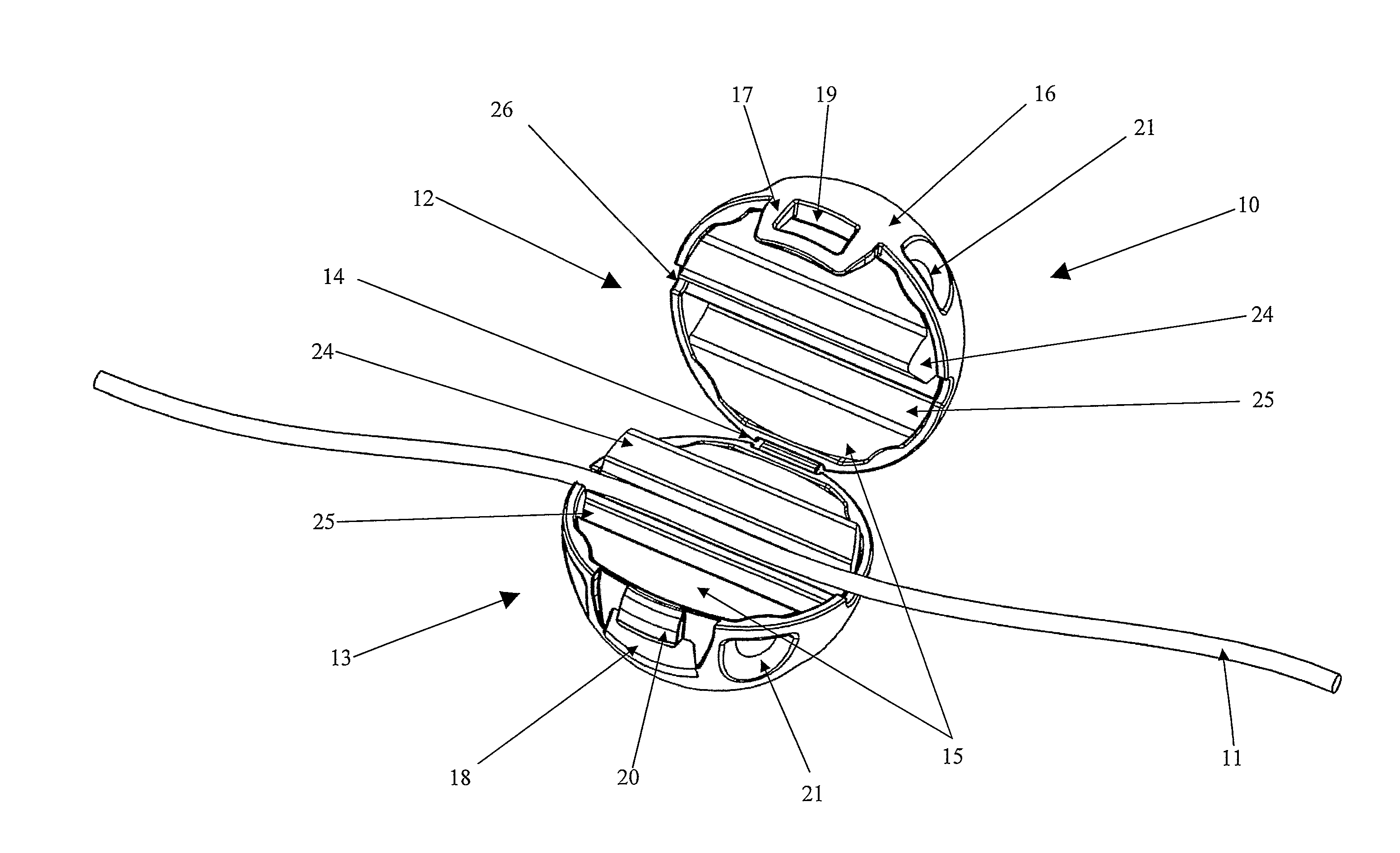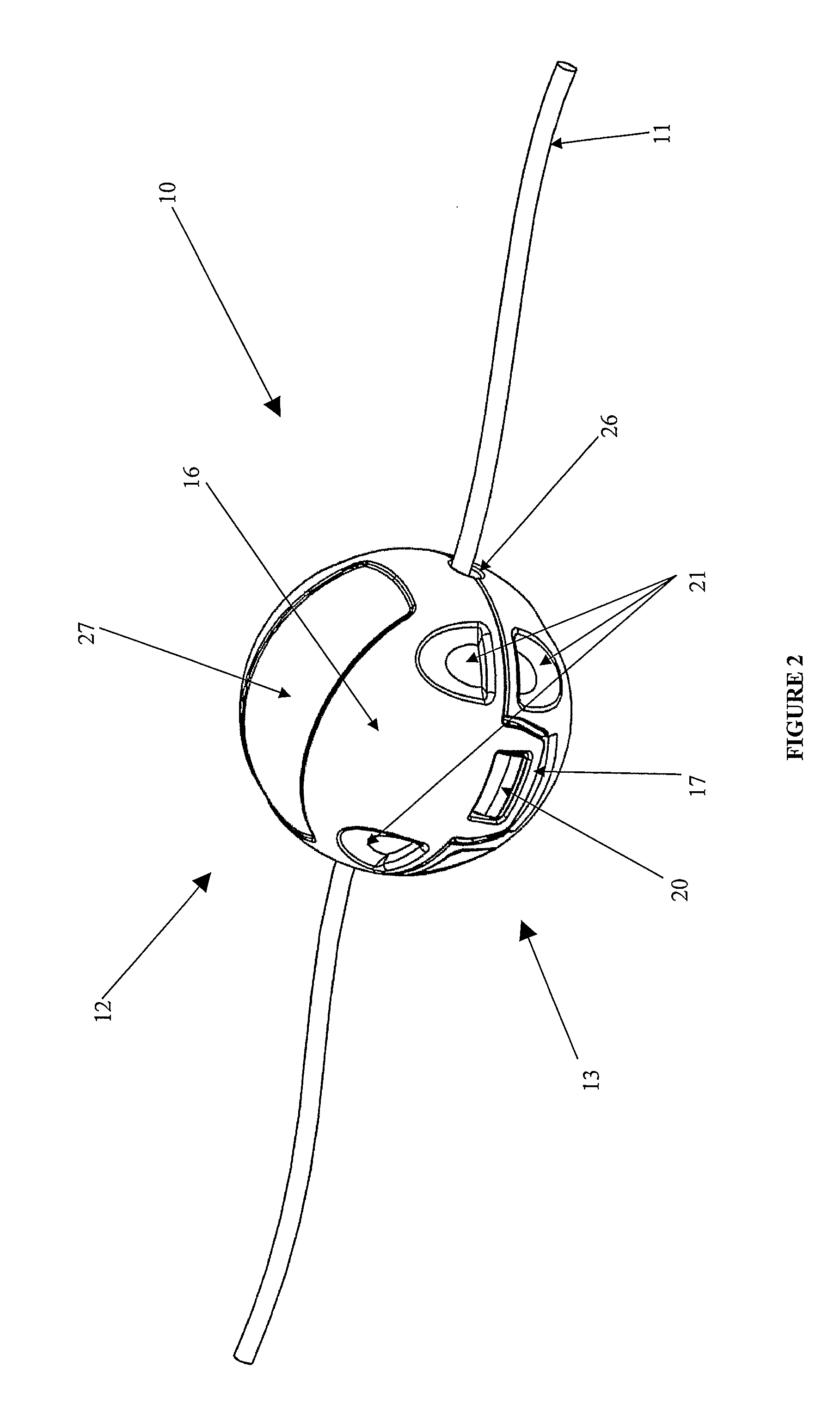Sinker for Fishing
a fishing line and snook technology, applied in fishing, other angling devices, animal husbandry, etc., can solve the problems of inconvenient cutting of lines, affecting fishing performance, and being difficult to cut lines,
- Summary
- Abstract
- Description
- Claims
- Application Information
AI Technical Summary
Benefits of technology
Problems solved by technology
Method used
Image
Examples
Embodiment Construction
[0043]FIGS. 1 illustrates a sinker 10 in an open position that can releasably clamp around a line 11. The sinker 10 (or float, but hereinafter referred to primarily as a sinker only) comprises two members, an upper half 12 and a lower half 13. In the embodiment illustrated in FIGS. 1 to 8, the halves 12 and 13 are hinged about point 14 such that the two halves 12 and 13 can open, receive a line 11, and close around or on the line 11 (e.g. as seen in FIG. 2).
[0044]Each of the halves 12 and 13 comprise an inner 15 made of a high or low density material. The density of the inner material 15 largely determines whether the sinker 10 sinks of floats in water. For example, if the inner material 15 is high density (e.g. lead) the sinker 10 will sink in water, and if the inner material 15 is low density (e.g. a floatation chamber or hollow plastic member) the ‘sinker’10 will instead be a float (although this is referred to as a ‘sinker’, no limitation is meant thereby).
[0045]Each half 12 and...
PUM
 Login to View More
Login to View More Abstract
Description
Claims
Application Information
 Login to View More
Login to View More - R&D
- Intellectual Property
- Life Sciences
- Materials
- Tech Scout
- Unparalleled Data Quality
- Higher Quality Content
- 60% Fewer Hallucinations
Browse by: Latest US Patents, China's latest patents, Technical Efficacy Thesaurus, Application Domain, Technology Topic, Popular Technical Reports.
© 2025 PatSnap. All rights reserved.Legal|Privacy policy|Modern Slavery Act Transparency Statement|Sitemap|About US| Contact US: help@patsnap.com



